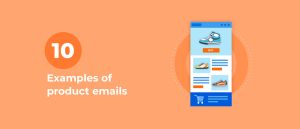
Practical Guidance: Building an Effective Email Marketing Strategy for New Customers
Crafting a winning email marketing strategy for new customers requires careful planning and execution. Here’s a breakdown of key steps:
1. Segment Your Audience:
Not all new customers are created equal. Segmenting your audience based on demographics, purchase history, or website behavior allows you to tailor your messaging for maximum impact. For example, customers who purchased a specific product might receive emails showcasing complementary items or related accessories.
2. Craft Compelling Welcome Emails:
The welcome email is your first impression. Make it count! A warm welcome, a brief introduction to your brand, and a clear call to action (e.g., browse new arrivals, claim a discount) are crucial. Consider a series of welcome emails to gradually introduce different aspects of your brand.
3. Provide Value-Driven Content:
Avoid bombarding new customers with constant sales pitches. Instead, focus on providing valuable content that educates, entertains, or solves a problem. Share helpful tips, exclusive insights, or behind-the-scenes glimpses into your brand. This builds trust and positions you as a valuable resource.
4. Personalize Your Messages:
Personalization goes beyond simply using the customer’s name. Leverage data to tailor your emails to individual preferences and interests. Recommend products based on past purchases or browsing history. This level of personalization enhances engagement and fosters a sense of connection.
Long-Term Considerations for Email Marketing Success
Email marketing isn’t a one-and-done activity. It requires ongoing effort and optimization for long-term success.
1. Analyze and Optimize:
Regularly monitor key metrics such as open rates, click-through rates, and conversion rates. Use this data to refine your email campaigns and improve your messaging over time. A/B testing subject lines, email content, and call-to-action buttons can help you identify what resonates best with your audience.
2. Maintain a Clean Email List:
Regularly remove inactive subscribers and ensure compliance with data privacy regulations like GDPR and CCPA. A clean email list improves deliverability and ensures your messages reach engaged recipients.
3. Stay Up-to-Date with Email Marketing Trends:
The email marketing landscape is constantly evolving. Stay informed about new technologies, best practices, and emerging trends to ensure your strategies remain effective and relevant.
4. Choosing the Right Email Marketing Platform:
Selecting the right email marketing platform is crucial for long-term success. Consider factors like scalability, automation features, analytics capabilities, and integration with other marketing tools. Evaluate different platforms to find the best fit for your business needs.
| Feature | Option 1 | Option 2 | Option 3 |
|---|---|---|---|
| Pricing | $10/month | $25/month | $50/month |
| Subscribers | 500 | 1000 | 2500 |
| Automation | Basic | Intermediate | Advanced |
Frequently Asked Questions (FAQ)
Q: How often should I send emails to new customers?
A: There’s no one-size-fits-all answer. Start with a welcome series and then experiment to find the optimal frequency for your audience. Monitor engagement metrics to avoid overwhelming subscribers.
Q: What are some effective ways to personalize email content?
A: Use customer data to tailor product recommendations, offer personalized discounts, or segment emails based on purchase history or website behavior.
Q: How can I improve my email open rates?
A: Craft compelling subject lines that are clear, concise, and create a sense of urgency or curiosity. Test different subject lines to see what performs best.
Q: What is the best way to segment my email list?
A: Use data like demographics, purchase history, website activity, and engagement with past emails to create targeted segments.
Disclaimer: This information is for informational purposes only and does not constitute professional marketing advice.
Sources:
- Mailchimp Email Marketing Field Guide
- HubSpot Email Marketing Resources
- Campaign Monitor Email Marketing Guide
Maximizing email marketing for new customers requires a strategic approach that focuses on personalization, valuable content, and ongoing optimization. By segmenting your audience, crafting compelling welcome emails, and providing relevant information, you can build strong relationships and drive conversions. Remember to analyze your results, stay up-to-date with industry trends, and adapt your strategies to meet the evolving needs of your customers.